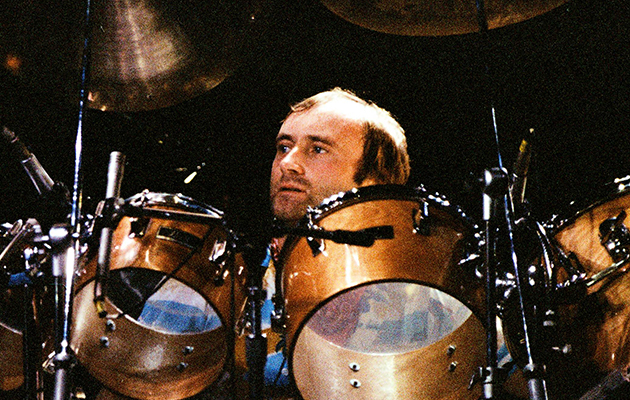The prog-rocker’s personal nightmare that became an ambient-electro, drum-holocaust sensation… Words: David Cavanagh. Originally published in Uncut's June 2008 issue (Take 133). Picture: Peter Still/Redferns ________________________ At the end of 1980, if you’d been looking for an artist to...
The prog-rocker’s personal nightmare that became an ambient-electro, drum-holocaust sensation… Words: David Cavanagh. Originally published in Uncut’s June 2008 issue (Take 133). Picture: Peter Still/Redferns
________________________
At the end of 1980, if you’d been looking for an artist to take British synth-pop into its darkest territories, you wouldn’t have glanced twice at Phil Collins, genial frontman of Genesis and drummer with jazz-fusioneers Brand X. Yet in January 1981, in those cold, confusing weeks following John Lennon’s murder, a singular piece of obsessive minimalism, climaxing in a cataclysm of drums, leapt from 36 to 4 in the UK charts. It was time to shift some paradigms.
Collins’ “In The Air Tonight” was only denied a UK No 1 place by Lennon’s posthumous chart-topper “Woman”. Intense and menacing, “In The Air…”, beloved of air-drummers and vocoder mimics, popularised a far-reaching new studio effect (“gated drum”, or “gated reverb”) discovered by engineer Hugh Padgham during 1979 sessions for Peter Gabriel’s third album in London. “In The Air…” was to become an enduring favourite of classic rock radio programmers, NFL footballers, foul-mouthed rappers and chocolate-advertising gorillas. It has even cultivated its own urban myth. In the most popular version, Collins witnesses a real-life murder (“I was there and I saw what you did”), and later lures the unsuspecting killer to one of his concerts where he sings “In The Air…” while a spotlight is trained on the guilty man’s face.
________________________
PHIL COLLINS (writer, performer): During the 1978 Genesis world tour, my marriage broke up. I came back to a virtually empty house. I moved everything out of the master bedroom, put a studio in, and threw myself into home recording. I had a Brennell 8-track, an electric piano, a Prophet-5 synthesiser and a drum machine. I had no intention of making a record. I was just keeping myself busy.
One of the songs was a moody thing with a bit of an atmosphere. I found some chords for it, which I liked, and rather than over-arrange it I decided to put a vocal on next. I was trying to move away from the complicated Genesis stuff, go in a simpler direction. I didn’t have any lyrics prepared, but I started singing, and what came out is what you hear on “In The Air…”.
It’s wonderful that an urban myth has grown up around it, and that people on courses at universities have tried to decipher its meaning, because I can say with hand on heart that I have no idea what it’s about. Obviously, having my wife leave me, and losing my two little ones, there was anger, bitterness and hurt. Those emotions are in the song, but in an abstract way. I’ve no idea what “coming in the air tonight” means – apart from an impending darkness, possibly.
About a year later, I played my demoes to our manager Tony Smith and also Ahmet Ertegun [Genesis were signed to Atlantic in America]. To me they were still just doodles, but Ahmet said: “You’ve got to make a record.” I’d met Hugh Padgham when I played drums on Peter Gabriel’s album [“Intruder”, “No Self-Control”], and bonded with him straight away as someone who could make my drums sound huge.
The drum fill on “In The Air…” became a landmark, I suppose. I’ve been at traffic lights and seen guys in cars pounding along to it on their steering-wheels. When we started getting visitors down to the studio, people like Eric Clapton, we’d play “In The Air…” to them – loud, obviously – and when the drums came in, they’d be flattened to the walls. It wasn’t my choice as single. When I did Top Of The Pops, it was No 36 in the charts. Dave Lee Travis said to me: “That’s going to be Top 3 next week.”
I thought: ‘Nah…’ It was the famous Top Of The Pops with the paint pot on the piano. Ironically, when I sang the original demo, and wrote down the words afterwards, I used a piece of decorator’s stationery. The decorator that my wife went off with. An interesting piece of memorabilia, there, should I ever wish to sell it.



